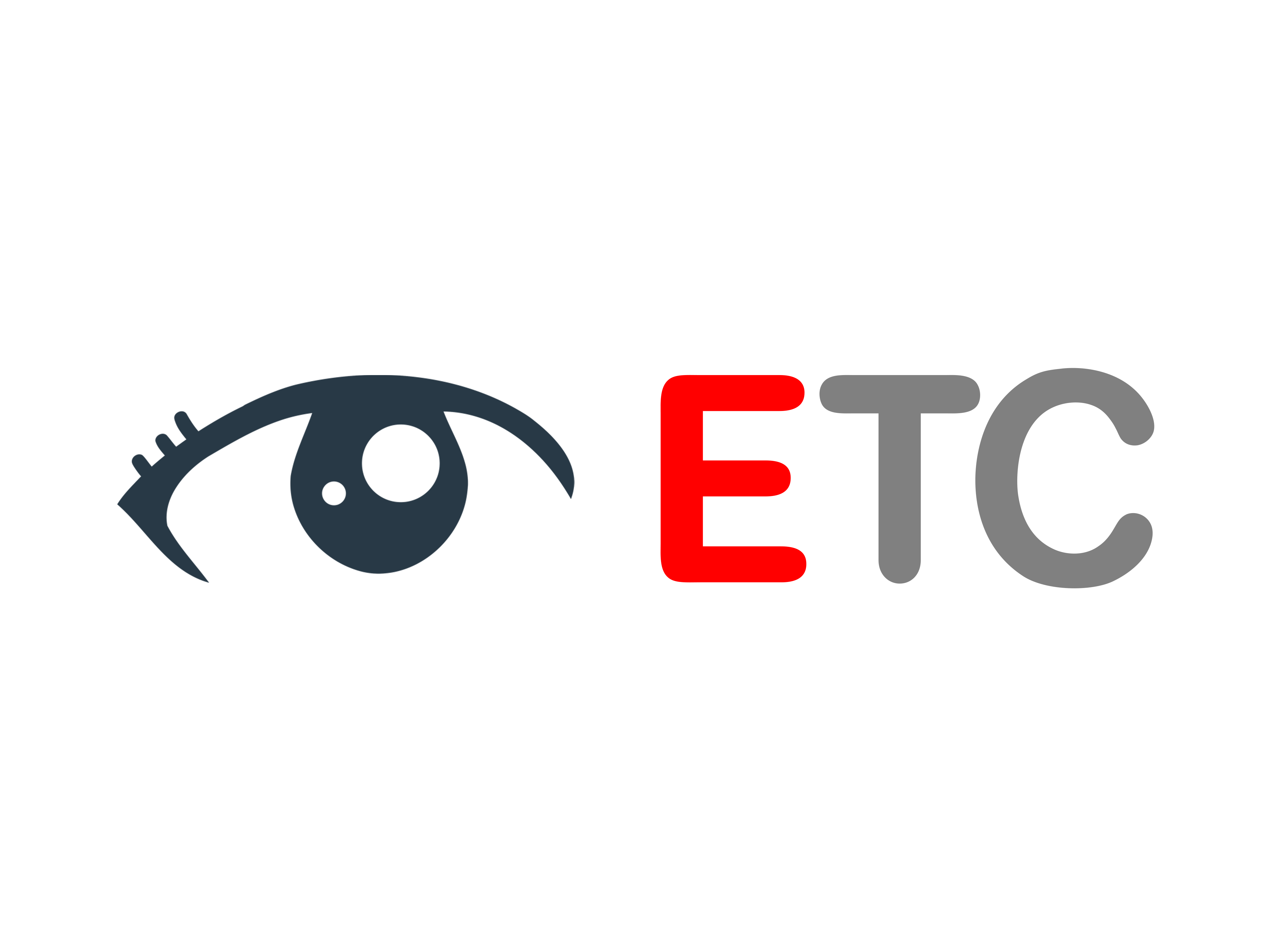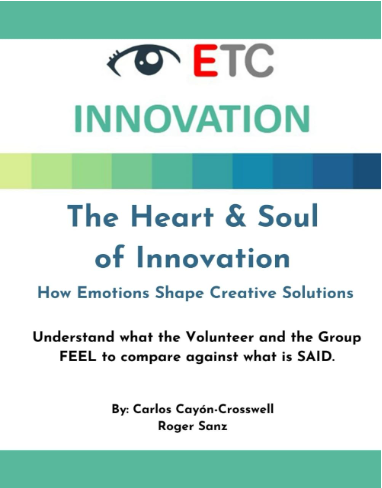Overview:
The ETC Innovation and Corp Culture Diagnostic Initiative is an intensive 7-week program aimed at assessing and advancing the innovation culture and Corp Climate within an organization.
Utilizing a cohort of a minimum of 25 volunteers, this initiative employs ETC’s cutting-edge emotional analytics to delve into the emotional drivers of innovation, contrasting these insights with traditional survey methods to formulate a dynamic corporate innovation strategy and improve corporate climate.
Objectives:
-
Conduct a deep emotional analysis of the organization’s innovation and corporate culture.
-
To identify key emotional influencers that either promote or inhibit innovation.
-
To benchmark emotional analytics findings against traditional survey results.
-
To develop a tailored corporate innovation and engagement strategy that is both informed and actionable.
Participant Selection:
-
25 volunteers representing a cross-section of roles and departments will be chosen to ensure a rich and varied cultural insight.
-
Volunteer selection criteria will focus on individuals who demonstrate varying degrees of engagement with innovation processes.
Video Interview Process:
-
Structured interviews will be conducted using ETC’s AI technology, focusing on eliciting emotional responses to innovation-related questions.
-
Interviews will explore critical issues such as leadership vision, creativity, diversity, and competitive awareness.
-
Emotional responses will be captured and analyzed to gain a deeper understanding of the participants’ true feelings toward innovation.
Comparison with Traditional Surveys:
-
A set of traditional surveys will be administered in parallel to the interviews.
-
Data from both sources will be mapped and correlated to analyze and demonstrate the depth and nuance that emotional analytics can add to our understanding of innovation culture.
Development of Corporate Innovation and Climate Plan:
-
Insights from the emotional analytics and survey data will be synthesized into a comprehensive innovation strategy.
-
The strategy will address corporate strengths and weaknesses and propose initiatives to foster a more innovative environment.
Program Timeline: Summary
Week 1: Preparation
Volunteer recruitment and selection.
Development of interview protocols and survey instruments.
Weeks 2-3: ETC Interview & Data Collection
Execution of ETC interviews and distribution of surveys.
Ongoing volunteer innovation engagement and support.
The Heart & Soul of Innovation: Emotions Shape Creative Solutions
Weeks 4-5: Data Analysis
Processing and analysis of emotional analytics data (volunteers & Group).
Comparative analysis with traditional survey data.
Week 6: Strategy Development
Integration of insights into a draft innovation strategy.
Initial review and feedback from key stakeholders.
Week 7: Finalization and Planning
Refinement of the innovation strategy based on emotional metrics.
Presentation of the final plan and discussion of implementation steps.
Expected Outcomes:
-
A comprehensive Innovation and corporate climate diagnosis detailing the emotional landscape of the organization’s culture.
-
A strategic plan for innovation that leverages unique emotional insights.
-
A roadmap for fostering an environment conducive to innovative thinking and practices.
Conclusion:
The ETC Innovation Culture Diagnostic Initiative is a forward-thinking approach to understanding and nurturing the soft side of innovation. Over the course of 7 weeks, this program will provide a detailed emotional map of the organization’s innovation culture and lay the groundwork for a strategy that truly resonates with the emotional dynamics of the company.
Typical employee bias while responding to Surveys
> Case: The New Employee
Scenario:
-
Background: a recent graduate, Jamie has just joined a consumer products company. Eager to make a good impression and worried about job security, Jamie is cautious about expressing true opinions.
-
Survey Topic: Workplace culture and management effectiveness.
-
Bias: Jamie feels pressured to provide overly positive feedback, fearing that any criticism might reflect poorly on their job performance or adaptability.
-
Outcome: The survey results from new employees like Jamie inaccurately portray a highly positive workplace culture, masking potential areas of improvement in management practices and employee integration.
> Case: The Mid-Career Professional
Scenario:
-
Background: Alex, a project manager with 10 years of experience at the company, has witnessed various management styles and policy changes.
-
Survey Topic: Employee satisfaction and resource allocation.
-
Bias: Alex has become somewhat cynical and disengaged over the years, feeling that previous survey feedback has yet to lead to tangible changes. This leads to either overly critical responses or apathetic participation in the survey.
-
Outcome: Alex’s responses, along with similar sentiments from other mid-career employees, skew the survey results towards extreme dissatisfaction, potentially overlooking areas where the company performs well or misrepresenting the intensity of specific issues.
> Case: The Veteran Nearing Retirement
Scenario:
-
Background: Morgan, nearing retirement, has been with the company for over 30 years and profoundly believes in the firm.
-
Survey Topic: Innovation and change readiness.
-
Bias: Morgan has a strong emotional attachment to the company’s traditional operating methods and is resistant to change. This bias leads to a tendency to undervalue new ideas or initiatives in the survey.
-
Outcome: The survey results from veterans like Morgan suggest a lack of support for innovative changes, potentially hindering the company’s growth and adaptation to new market demands. This feedback might not accurately represent the workforce’s readiness for change but rather a specific generational perspective.


